Best types of fish to eat

There are so many reasons why you should add more fish and seafood to your diet.
Firstly, because it’s delicious, but secondly, because it’s packed with essential nutrients like protein and vitamin D. It’s also rich in omega-3 fatty acids – essential fats that reduce the risk of heart disease and strokes and are proven to lower blood pressure and reduce inflammation.
We’re lucky to live in New Zealand, a country world-famous for its seafood. From king salmon to scallops to snapper to prawns, we produce some of the finest seafood in the world – right here in our backyard.
Types of fish
But with so many types of fish to select from, it can be difficult to know which to pick. If you’re not sure where to begin, we’ve put together this handy guide to types of fish and seafood.
Salmon

Texture and flavour
Salmon flesh is delicate and “melt in the mouth”, and its taste is rich and full in flavour. King salmon is an oily fish that stores high levels of natural fats and oils.
There are plenty of ways to cook salmon, but it can also be served rare and eaten raw. Salmon has a fast cook time and will flake easily when tested with a fork.
Recipe inspiration
At New World, we love salmon baked, grilled, pan-fried, barbequed, and in sushi and sashimi,
- Salmon fish cakes with tartare sauce
- Pan-fried salmon steaks
Tuna
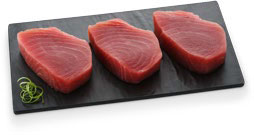
While many people may be more familiar with canned tuna, fresh tuna with its deep red colour is just as tasty. There are several species of tuna available in New Zealand: albacore, bigeye, and yellowfin tuna.Like salmon, tuna is rich in omega 3s and B-vitamins with a high protein level per serving.
Texture and flavour
Tuna is delicate with very little fat. It has a mild but luxurious flavour and versatility. The steaks are best seared in a pan, cooked on the grill, or served raw in a poke bowl, salad or sushi.
When searing, chefs often encrust the outside edge with sesame seeds to protect the meat and add a slightly nutty flavour.
Recipe inspiration
- Quick tuna casserole
- Mediterranean tuna pasta salad
Snapper

Snapper is one of New Zealand’s most popular sport and table fish. It is found consistently around the North Island on almost every reef and every harbour and channel. There are even specific fishing charters that you can join to catch snapper.Whether you’re fishing it, buying it from your local supermarket or grabbing some battered pieces from your fish ‘n chip shop, there’s no question that snapper is one of the most loved Kiwi fish.It’s also great for your health. A snapper fillet contains tons of calcium, iron and protein and is low in cholesterol and saturated fats.
Texture and flavour
Snapper has a lean, firm texture. The flesh is white and delicate, tinted pink from its red skin and it has a sweet, fresh and mild taste. When cooked properly, it should be moist and juicy.
If you’re not sure how to cook snapper, try baking, frying, steaming, broiling, poaching or grilling your fillets.
Seasonings like lemon, butter and fresh chilli are snapper’s best friends.
Recipe inspiration
We’ve put together a few quick and easy snapper recipes for you to try. These recipes don’t call for snapper specifically, but we promise it will be a great choice.
- • Macadamia and coconut crumbed fish
- Beer battered fish with a salt and vinegar mayo
- Cajun fish tacos
Gurnard

Gurnard is widespread around New Zealand’s shores and, just like snapper, can usually be found at your local fishmonger.When whole, gurnard is known for being a very bony fish. If your fish isn’t filleted already, ask your fishmonger to remove the spiky fins, skin and bones.
Texture and flavour
Gurnard has white firm fillets that hold their shape well when cooked. It is a very mild taste that goes well with other intense flavours.
There are plenty of ways you can cook gurnard, including:
- Frying
- Poaching
- Steaming
- Baking
- Barbequing
- Casserole
- Curry
- Sushi/sashimi
Since it holds its shape well, gurnard is excellent at absorbing other flavours and enhancing those flavours. It goes particularly well with earthy flavours like mushrooms and sharper flavours like onions and lemons.
Recipe inspiration
Thinking of making gurnard for dinner? Try one of our tasty recipes:
- Gurnard with couscous
- Italian style baked gurnard parcels
Hoki
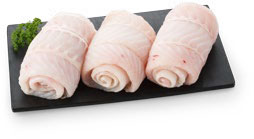
Hoki is one of the most readily available and inexpensive Kiwi fish. Your local fish and chip shop will nearly always have some tasty battered hoki on offer and you can find it in the freezer or fresh seafood section of the supermarket. Wherever you look, you’ll find hoki!The fish has relatively few scales or bones, so it is very easy to fillet.
Texture and flavour
Hoki is a white fish with delicate, succulent and slightly sweet meat. Once cooked, it has a medium flake and is tastier than most other white fish because of its higher fat content.
If you’re unsure how to cook hoki, we recommend crumbing your fillets then shallow frying or baking. But there are plenty of other wonderful ways to cook hoki too, like in curries, pan-frying or even beer battering for DIY fish and chips.
Recipe inspiration
- Pan-fried hoki fillets
- Hoki curry
- Crumbed hoki
Tarakihi
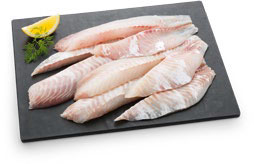
Tarakihi has been a popular fish on the menus of Kiwi restaurants and takeaway joints since forever ago.It is highly versatile and sought-after, has been fished commercially off our shores for more than 100 years and is available in New Zealand year-round.
Texture and flavour
Tarakihi has medium to firm white flesh and relatively low oil content, making it one of the healthiest fish. Its taste is delicate, sweet and earthy, and it works well in a variety of dishes. It’s perfectly at home in simple dishes with fresh herbs and spices and just as good in punchy chowders and middle eastern curries.
Not sure how to cook tarakihi? Try baking, grilling, poaching, frying, or even adding it to casseroles, soups or curries.
Recipe inspiration
• Tarakihi with vegetable fritters
Trevally

Trevally is known for being one of the best fish to eat raw. Trevally is lauded as a sashimi hero in Japanese cuisine, prized for its beautiful pink marbled appearance and translucent texture. But there are plenty of other ways to cook trevally too. It is suitable for most cooking methods, including baking, frying, poaching, steaming and marinating.
Texture and flavour
Trevally is medium-textured and moist with sweet flesh.
As well as being delicious in sashimi, it makes a great addition to curries and is excellent smoked.
Recipe inspiration
Trevally would make a great choice of fish in our ceviche tostadas.
Blue Cod
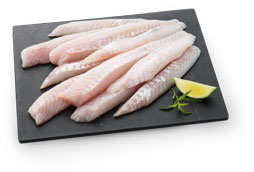
The blue cod is indigenous to New Zealand and found predominantly in the colder waters of the South Island. The fish varies in colour depending on its sex and age.Cod is sometimes referred to as ‘the chicken of the sea’ because of its flaky white meat and mild taste.
Texture and flavour
Blue cod has medium-textured flaky flesh and low oil content, making it easy to cook using most methods. Try baking, frying, steaming, grilling, or adding to curries or pies
Prawns
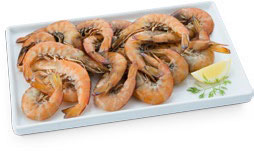
Okay, so prawns aren’t technically a fish. But when looking for a tasty seafood dish, you can’t go wrong with prawns. Healthy and versatile, these tasty little morsels are quick and easy to prepare and a Kiwi summer staple.
What kind of prawns should I buy?
Fresh or frozen?
Before purchasing prawns, decide whether you want to buy them fresh or frozen. Both will work in most dishes, but frozen prawns will need to defrost and tend to have less flavour once cooked. If you’re looking to keep them handy for a weeknight dinner, frozen can be a great cost-effective option.
Cutlets or whole prawns?
Decide too if you’re going to buy prawn cutlets or whole prawns. If you purchase prawn cutlets, all the prep work is already done for you. Usually, the tail will still be attached, but this can be a natural “handle” for finger-food style prawns. It’s up to you if you leave the tail on or pull it off before serving.
If you buy whole prawns, you’ll need to remove the head, shell and vein before cooking and eating.
Texture and flavour
Prawns have a delicate and slightly sweet taste, making them perfect to pair with all kinds of other ingredients. From curry to pasta to pizza, they taste right at home in countless dishes and cuisines.
There are many ways to cook prawns and a huge variety of flavour combinations to try out.
Whatever method you choose, just remember they cook super quickly. Keep a close eye on them while cooking because overcooked prawns turn tough and rubbery.
Other seafood and fish
So, we’ve covered the most well-known and common Kiwi fish, but that doesn’t mean you won’t strike some other seafood varieties from time to time.
These are just a few of the other fish you might find at the New World Seafood counter:
Mullet
Mullet has a rich, nutty taste and cooks up white, firm and juicy. It has a high oil content, which makes it great for charcoal grilling and hot smoking.
Find out more: How to cook mullet
Trout
Trout, unlike most other fish, has a wide range of taste profiles. Put simply, the taste of the trout depends on its diet and the environment in which it was caught. In general, trout caught in lakes will have better flavour than river trout. At its best, trout is oily, flaky and flavoursome.
Trout is the ideal size to bake whole and can be delectable pan-fried and smoked.
Dory
When you hear the word ‘dory’, your mind might wander to the forgetful fish in Finding Nemo. But dory is not only a character; it’s also a delicate light fish species known for its firm and flaky texture. Dory has a mild, slightly sweet flavour.
Scallops
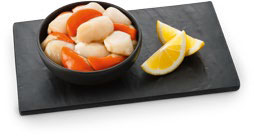
Scallops are actually shellfish, made up of a meaty muscle sandwiched between two hinged shells. The muscle opens and closes the shells, which allows the scallop to “swim” across the ocean floor. The round muscle is the part of the scallop that we eat.Often referred to as the candy of the sea, scallops are mild, delicate, sweet and buttery. Their tender, succulent meat is very similar to that of lobster and crab – just slightly firmer.Just like prawns, scallops cook very quickly, so they need to be watched carefully. If cooked too long, they become chewy and rubbery.
Lobster

Lobster and fine dining go hand in hand. Fancy, high-end restaurants tend to serve lobster for a hefty fee due to its constant demand. As these crustaceans dwindle in numbers, the prices soar.Lobster meat is firm, smooth and soft to the bite and has a sweet, fresh and salty taste.Depending on how it’s cooked, the taste and texture of your lobster can vary massively. If you boil it or steam it, it will remain plump and juicy tasting. But if baked, fried or grilled, the meat will take on a smokier flavour.
Feeling inspired to create some delicious seafood dishes? Head to see our fishmongers at New World or check out our selection online:
Looking for articles about fish and seafood? Check out the guides in our Seafood Hub: